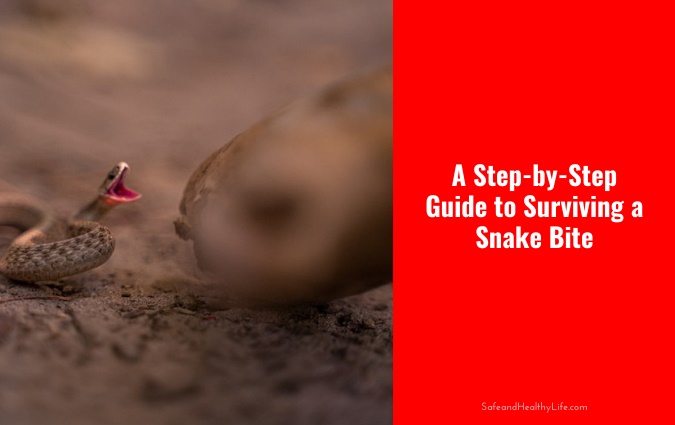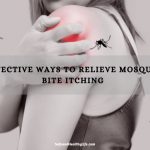
With more venomous snakes here in Australia than in any other place in the world, it’s worth knowing how to treat a snake bite if you or someone else is bitten as it can be the difference between life and death.
While the death rate is rare, snake encounters are common, and knowing what to do can lead to a better outcome.
Call an ambulance straight away
Unless you’re an avid snake lover, you may not know whether a venomous or non-venomous snake is the culprit.
You should call an ambulance either way. All snake bites should be regarded as venomous, and emergency medical attention should be sought. Mistaking a venomous snake for a non-venomous snake can be a deadly mistake.
Don’t wait to feel the effects before seeking help, as by then it might be too late. Early intervention is key.
How to survive a snake bite step-by-step guide
If you have been bitten by a snake, you must stay as still as possible. Call for help from where you are or if you can’t, get someone else to go get help if possible.
If you have someone with you and you can call from where you are, get them to call 000 and ask for an ambulance.
The Emergency+ app can come in handy if you do get bitten by a snake and you don’t know your exact location.
It has GPS capabilities that enable emergency personnel to locate you quickly. It has an integrated one-touch 000 button. You can download this for free from the app store.
Try to remain calm and still
We know that this is probably easier said than done. Being bitten by a potentially fatal dose of venom can be highly frightening.
Try your best to remain as calm as possible and remind yourself that snake bite deaths are rare in Australia. Remaining calm and still will slow the spread of venom throughout the body.
From the bite site, snake venom will first enter the lymphatic system and it won’t travel to the bloodstream if you stay still.
Lymph moves when the limbs are moved so, if you can stay still, you can prevent it from entering the bloodstream, and this can lead to less severe effects from the venom and better outcomes.
You should only move if you think you are in danger of being bitten again by the snake. If it has gone, stay where you are. Ensure that other people don’t move you. Begin administering first where you are.
Do not attempt to identify the snake
There is no point attempting to identify the snake, you could get bitten again or someone else could, and it is simply not worth the risk.
There are several tests that hospital staff can run to determine which type of snake has likely bitten you. They can administer the best treatment given the results of these tests.
Administer snake bite first aid
Most of the time, snake bites occur on the limbs, very rarely do they occur on the torso, head, or neck. If you have a snake immobilisation bandage, you can apply this to prevent the venom from traveling through the lymphatic system.
How to do this:
If you have a gauze pad or similar, place this over the bite site. If residual venom is on the skin, the gauze can soak this up, and it can be tested later on. Do not wash the skin before applying the bandage.
Next, apply your immobilisation bandage:
A snake bandage is preferable as it has continuous indicators which show you when the correct amount of pressure has been applied.
If you don’t have one of these, an elasticised roller bandage will work just as well. Roll the bandage firmly over the bite sight until all of the bandages are used up.
Use a second bandage to immobilise the entire limb. If the bite is on the hand or arm, start at the fingers. If the bite is on the leg or ankle, start at the toes.
Even slight movements from the fingers and toes can assist venom progression.
The secondary bandage needs to be applied firmly and should be wrapped to cover the entire limb. Ensure that you don’t tourniquet the limb as this can be dangerous.
If you do not have a snake immobilisation bandage or elastic bandage, use whatever you have on you to bandage the bite site. This could be a shirt, leggings, or similar.
After the bandage has been applied, mark the bite site on the bandage with a pen, marker, or even dirt if you don’t have either of these. You then should splint the limb to prevent movement.
If you don’t have a splint, you can use a stick. Using a third bandage or materials from clothes, secure the splint to the limb.
What happens if I’ve been bitten, and it is not on a limb?
If you’ve been bitten on another part of the body such as the head or torso, a different approach should be taken.
For torso bites, the casualty should remain as still as possible, and firm consistent pressure should be applied to the bite site until help arrives.
No first aid is relevant to the neck or head snake bites. It is absolutely critical that the casualty remains still.
First aid for these areas is not as effective as first aid for the limbs as the venom cannot be contained as well. Immobilisation is paramount in these instances. If the casualty needs to be moved, they should only do so with the support of others to prevent movement.
Take an accredited first aid course
If you haven’t already, it is a good idea to take a nationally accredited First Aid Course. Throughout the course, you will learn how to treat a snake bite with hands-on practical training.
This can give you the confidence to act appropriately if you or someone else is bitten by a snake.
At Paradise First Aid, we offer first aid training that covers snake bite first aid in depth. Contact us to enroll today. We offer multiple courses each week in various locations across the Gold Coast.
Alternatively, you can find additional information on snake bite management on our website.
About The Author:
Andy Panes is the Director of The First Aid Group, who are specialists in first aid training. Panes hold a Diploma in Emergency Services and is a member of the National Institute of First Aid Trainers (NIFAT). Recently, he organised the 2022 National First Aid Trainers Conference.




